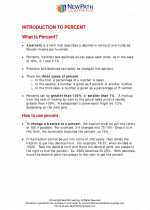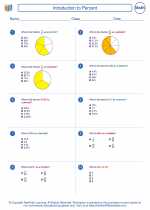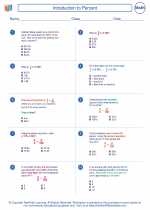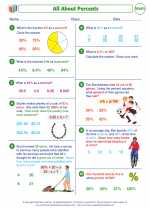Introduction to Percent -> octagon
Octagon Study Guide
An octagon is a polygon with eight sides and eight angles. It is a two-dimensional shape that is commonly found in architecture, art, and design. Understanding the properties of an octagon is important for various mathematical and practical applications.
Properties of an Octagon:
- Number of Sides: An octagon has 8 sides.
- Number of Angles: An octagon has 8 angles.
- Sum of Interior Angles: The sum of the interior angles of an octagon is given by the formula: (n-2) * 180 degrees, where n is the number of sides. For an octagon, the sum of interior angles is (8-2) * 180 = 1080 degrees.
- Sum of Exterior Angles: The sum of the exterior angles of any polygon, including an octagon, is always 360 degrees. Each exterior angle of an octagon measures 45 degrees.
- Types of Octagons: There are regular octagons (all sides and angles are equal) and irregular octagons (sides and/or angles are of different lengths/measures).
- Diagonals: An octagon has 20 diagonals, which are line segments connecting non-adjacent vertices.
Formula for Calculating the Area of an Octagon:
The formula to calculate the area of a regular octagon is:
Area = 2 * (1 + √2) * s2
where s is the length of each side of the octagon. For irregular octagons, the area can be calculated by dividing the shape into smaller, more manageable shapes (e.g., triangles, rectangles) and summing their individual areas.
Real-World Applications:
Understanding the properties of octagons is useful in various real-world scenarios, such as:
- Architectural design and construction
- Creating and analyzing geometric patterns
- Designing logos, emblems, and symbols
- Urban planning and layout of roads, parks, and buildings
Conclusion:
Octagons are fascinating geometric shapes with unique properties and applications. By studying and understanding the characteristics of octagons, one can gain a deeper appreciation for their presence in our surroundings and their significance in mathematics and beyond.
Happy learning!
[Octagon] Related Worksheets and Study Guides:
.◂Math Worksheets and Study Guides Seventh Grade. Introduction to Percent

 Worksheet/Answer key
Worksheet/Answer key
 Worksheet/Answer key
Worksheet/Answer key
 Worksheet/Answer key
Worksheet/Answer key
 Worksheet/Answer key
Worksheet/Answer key
